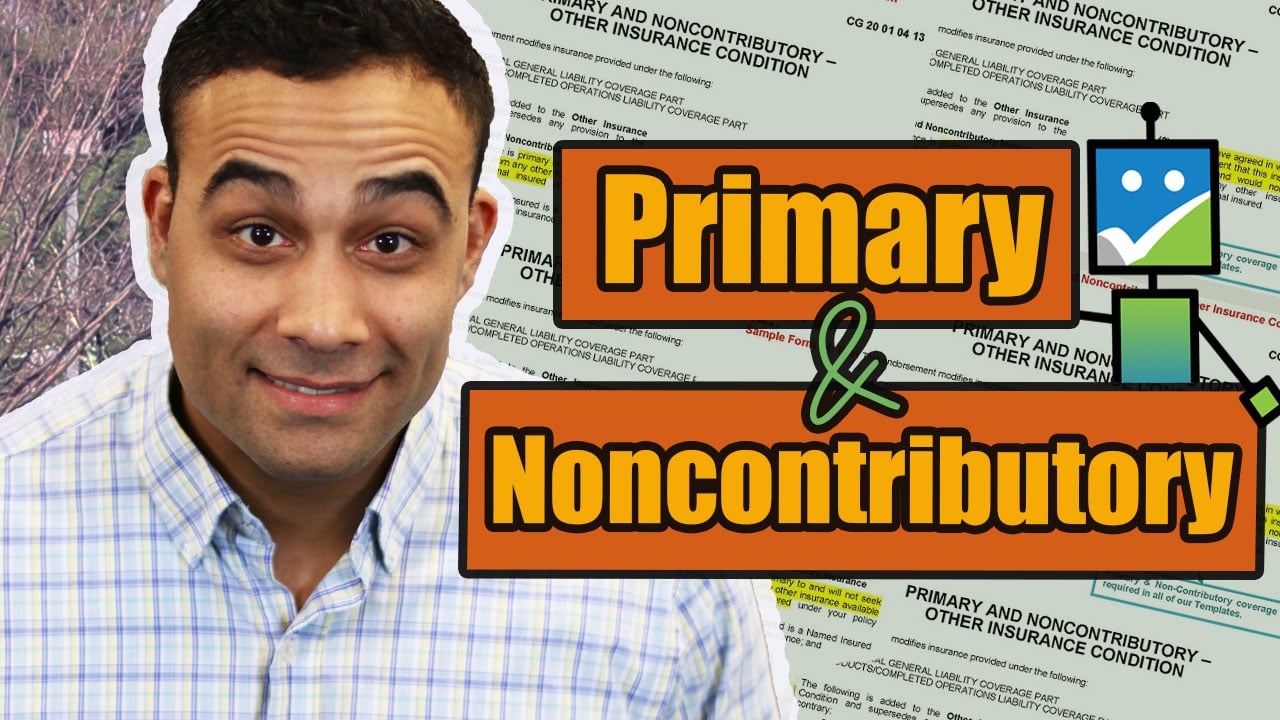
Everything You Need to Know About Primary & Noncontributory Endorsements
The language of insurance policies can be quite tricky—especially as additional parties become involved in business operations or projects.
When multiple parties are included under a policy as additional insureds, it can be challenging to know who should contribute to a claim first, and to what degree.
Insurance policy endorsements clarify these questions.
- Primary endorsements designate the first party responsible for contributing to a claim before another person’s policy applies.
- Non-contributory endorsements prevent insurers from seeking contribution from other insureds’ policies, and specify whether and which other parties are required to contribute if a claim exceeds coverage limits.
These endorsements not only define the designated order and requirements of parties responding to a claim, but fundamentally protect businesses in the event of liability.
Why Are Primary & Non-Contributory Endorsements Important?
Each policy is unique in coverage and when a claim exceeds designated limits, insurance companies decide who will be liable for the remainder.
Primary and non-contributory endorsements add a layer of protection to help businesses limit liabilities and potential losses.
Let's take a look at primary and non-contributory endorsements in action:
Scenario
A builder hires an interior design firm to stage the penthouse apartment in a luxury building. When viewing the penthouse for an upcoming showing, a realtor trips on the edge of a decorative rug and breaks his two front teeth upon hitting the floor. The design firm had not adequately laid down the rug during the staging process. The injury requires a costly cosmetic dental procedure. The realtor sues the design firm and the builder for damages incurred.
Assuming the agreement between the builder and interior design firm included an additional insured endorsement, the builder will seek coverage under the interior designer’s policy.
Primary Language
In this situation, the interior design firm is the primary endorsement and, therefore, is responsible for responding to the claim first.
The degree of their responsibility will be determined by whether or not non-contributory language is present in the endorsement.
Non-Contributory Language
If the endorsement includes non-contributory language, the design firm would not be able to look to the builder to contribute to the claim if its costs exceed the limits of their insurance policy.
For example, if the realtor sues for $20,000 in damages, but the design firm has a policy limit of $15,000, the design firm would pay the maximum ($15,000) through its insurance, and the remaining balance through other means such as other policies or out-of-pocket payments.
It would not be able to seek that balance from the builder, as they have been designated a non-contributing party.
Common Uses For Primary & Non-Contributory Endorsement
Primary and non-contributory endorsements are common practices in commercial general liability insurance among general contractors and subcontractors, property owners and general contractors, landlords, and tenants, as well as automobile liability and worker's compensation policies.
Primary & Non-Contributory Endorsements vs. Waivers of Subrogation
Although a waiver of subrogation may appear similar to primary and non-contributory endorsements, they’re fairly different.
While primary and non-contributory endorsements protect additional insureds from having to make contributions during a claim, a waiver of subrogation prevents an insurance company from seeking contributions from a negligent third party to reimburse amounts already paid to a claim.
bcs: Your COI Tracking Solution
When working with numerous vendors, it is important to not only maintain full visibility over the language of primary and non-contributory endorsements within policies, but the entirety of third-party processes.
From document tracking and onboarding to certificate of insurance (COI) compliance and request for proposal (RFP) broadcasting, vendor management is naturally accompanied by myriad moving parts.
Luckily, cutting-edge automated software keeps track of expirations, deficiencies, and other liabilities—automatically flagging and notifying businesses in-app for an easy return to compliance.
While juggling third-party processes can feel like a handful, innovations such as bcs full-service and self-service software streamlines the complete scope of your project so you can create safer relationships, stave off risk, and focus on running your business.
bcs is the preeminent COI management solution on the market. Offering full- and self-service tracking, self-onboarding through the BCS App, in-app communication tools, vendor portals, automated RFP broadcasting, and so much more, this software modernizes your vendor processes for safer, more streamlined outcomes.
To learn more, schedule a demo or contact us today.
Subscribe Now
Learn from the pros about risk-mitigation, document tracking, and more, with expert articles from bcs.





Leave a comment